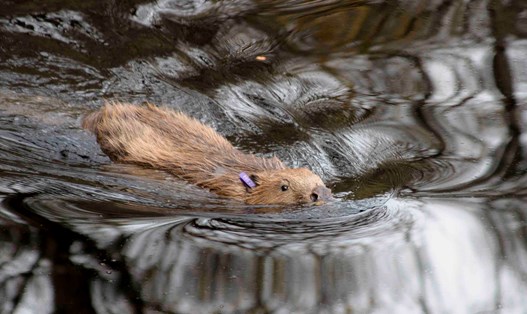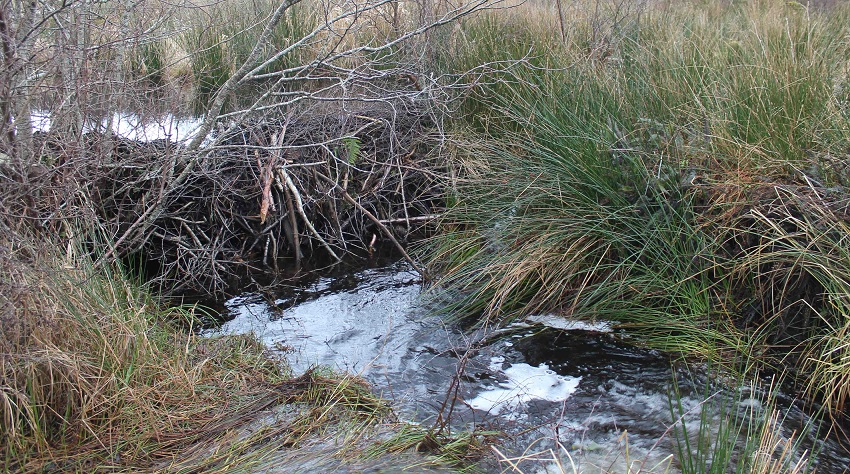Mapping beavers across Scotland
Posted 1 Sep 2020

Help us to build a better understanding of Scotland’s beavers
Did you know that you are part of the first generation in over 400 years that has the chance to see beavers in the wild in Scotland? These incredible natural engineers are once again an important, protected and beneficial part of our landscape…and they may be closer than you think.
Since 2019, beavers have been a legally protected species and they are slowly but surely expanding their range across the Tay, Forth and Clyde river catchments. Monitoring range expansion is the latest milestone in our efforts to restore beavers to the wild in Scotland, which began with the Scottish Beaver Trial back in 2009.
To track this natural expansion in their range, we need your help! By submitting any sightings that you have of beavers or beaver activity, you will help us to build a better understanding of where beavers are in Scotland. This data will be fed into a national database and will really make a difference. We’re thrilled to have you on board with this important work - welcome to the team!
What to look out for
While it’s perfectly possible that you might see a beaver, it’s more likely that you’ll see signs of beaver activity – you just need to know what to look for.

How to report your sighting
Submit your sightings of beavers or beaver field signs in one of the following ways:
Through the Mammal Mapper app
Developed by the Mammal Society, this free app is available to download on both Android and Apple devices.
Via an online form
Complete the Mammal Society’s mammal recording form and your sightings will also be fed into the national database.
Sightings of beavers submitted in one of these ways will feed into a national database that we can then use to track the natural spread of beavers throughout Scotland.

FAQs
I've found a dead beaver, what should I do?
If you find a dead beaver please contact beavers@nature.scot. If you suspect a wildlife crime may have occurred then you should contact Police Scotland on 101.
How do I tell the difference between a beaver and an otter?
It’s quite common for people to get confused about whether they’ve seen a beaver or an otter. After all, they are both brown mammals that spend a lot of time in water. So, here are a few handy things to look out for:
Tail: Beavers have a broad, flat, paddle-like tail – otters have a long, tapering tail.
Face: Beavers are herbivores and have a broad, rodent muzzle, otters are carnivores and have a longer, pointed muzzle.
Body: Beavers have a stocky, rounded body, otters are longer and more slender.
Moving in water: Beavers tend to swim with their head and body length visible above water, whereas with otters, you just see the head. Beavers will also sometimes slap their tails on the water as a warning.
Moving on land: Beavers tend to move relatively slowly, whereas otters are far more athletic.
What’s in its mouth: If the animal has vegetation in its mouth, it’s a beaver. If it’s got a fish (or another kind of animal), it’s an otter. If you can see the teeth, beavers have large, orange incisors, and otters have white, pointed canines.
How do I download Mammal Mapper?
If you’re accessing this webpage on a mobile device, simply click on one of the links above to visit the App Store or Google Play store and follow the instructions. Otherwise, from your device, open the App Store or Google Play store and search for ‘Mammal Mapper’.
How do I use Mammal Mapper?
Once you’ve opened the app, you have two options from the homescreen:
Start Survey – select this option if you’re going on a journey where you can safely use your phone and wish to record all the mammals you see along the route.
Report a Sighting – select this option if you wish to record a one-off sighting of a live or dead mammal, or a mammal sign (such as droppings, den, feeding remains, hair or a print).
A few things to note:
For the app to work, you will have to give the app permission to use your location. If you are unable to submit your route or individual record whilst out and about, you can save it and submit it when you have access to the internet. In all cases, you have the option to take and submit a photo of the sighting, which can also be saved to your device’s camera roll. To activate or deactivate the saving of photos from the app, go to ‘More’, ‘Settings’ and check/uncheck the ‘Save Photos to Gallery’ option.
In order to be able to submit records you will need to sign up using your email address and a username. You will be prompted to do this the first time you submit a record. The Mammal Society will assign your user ID and contact to each record. If you are interested in exporting your records, they will all be associated with the same user ID.
Where does my data go and how is it used?
By entering a sighting into Mammal Mapper, your data will be fed directly into iRecord where it will be verified by an experienced moderator. The Scottish Beavers team (consisting of staff from the Scottish Wildlife Trust and the Royal Zoological Society of Scotland) have direct access to these sightings within iRecord, so can see your data almost immediately.
Verified data from iRecord is periodically sent to the NBN Atlas, where it is then publicly accessible.
Can I use Mammal Mapper if I have no signal or I'm using a tablet?
Yes, Mammal Mapper uses your device’s inbuilt GPS, meaning you can use it in areas with no phone reception. Your surveys and sightings will be stored in the App and submitted when you have access to the internet.
Who do I contact if I have a query about the Mammal Mapper?
You can email the Mammal Society at science@themammalsociety.org or get in touch with them via Twitter: @MammalMapperApp.

